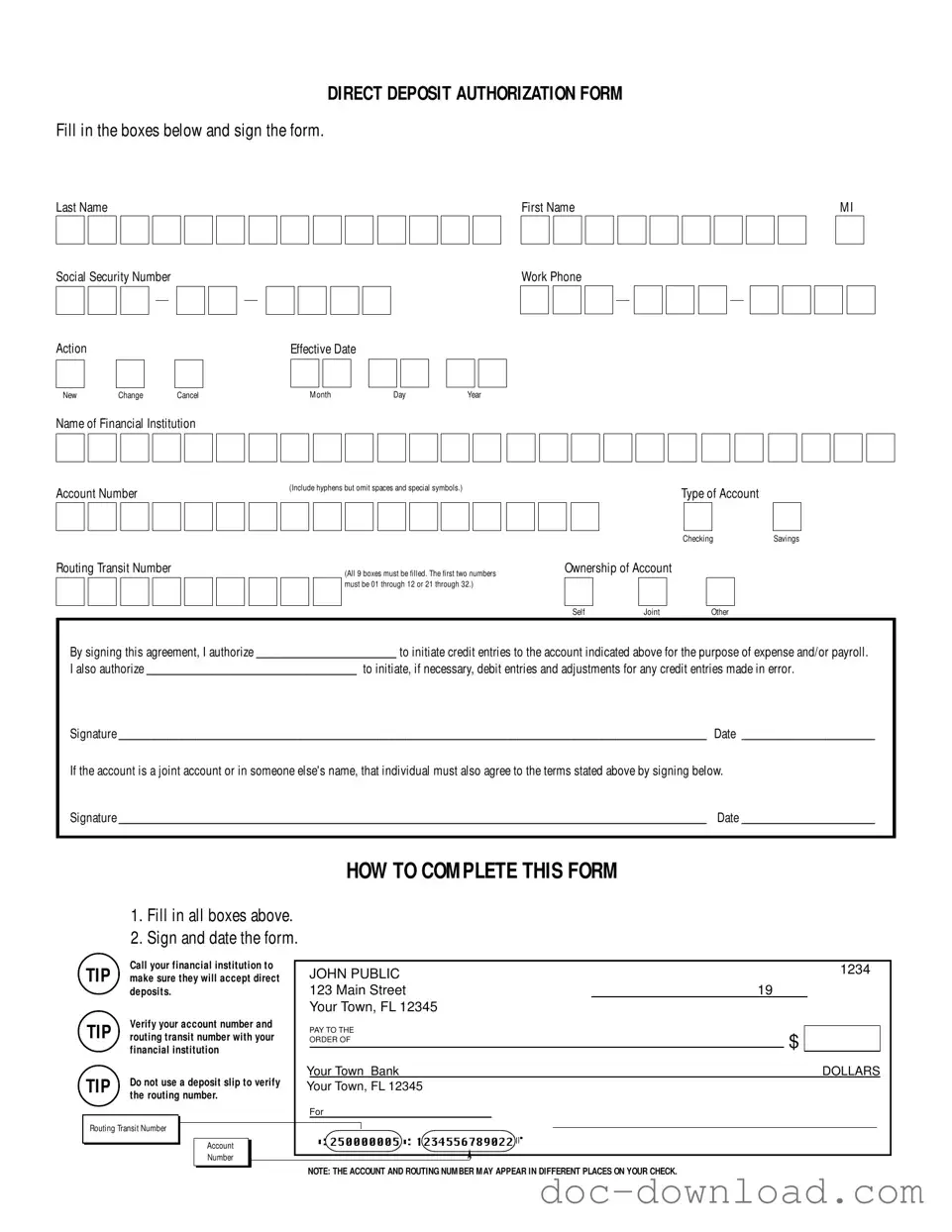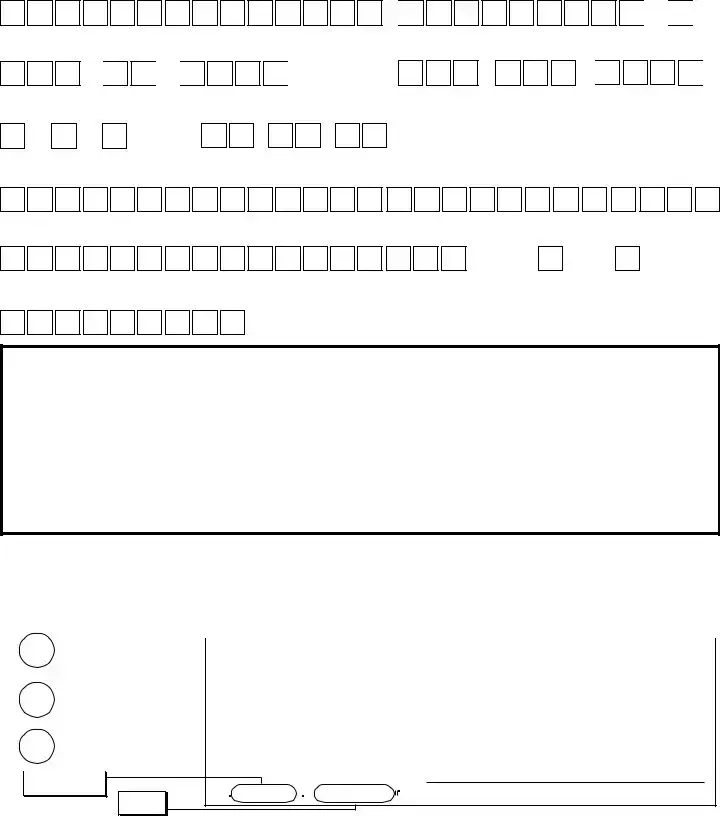The Generic Direct Deposit form shares similarities with a Payroll Authorization form. Both documents serve the purpose of allowing an employer to deposit funds directly into an employee's bank account. They require personal information, including the employee's name, Social Security number, and banking details. The Payroll Authorization form typically includes a section for the employee to indicate whether this is a new setup or a change to existing information, mirroring the options found in the Direct Deposit form.
Another document that resembles the Generic Direct Deposit form is the Automatic Payment Authorization form. This document is used to authorize recurring payments, such as utility bills or loan payments, to be deducted directly from a bank account. Like the Direct Deposit form, it requires the account holder's banking information and often includes a section for the account type. Both forms aim to streamline financial transactions by eliminating the need for manual payments.
The various forms utilized for financial transactions, such as the Generic Direct Deposit form, share commonalities in purpose and structure. Essential documentation, including a Purchase Agreement, plays a key role in formalizing the consent and authorization necessary for these automatic processes, ensuring accuracy and protection for all parties involved.
The Bank Account Information form is also quite similar. This document is often used when opening a new bank account or changing account details. It requires similar information, such as the account holder's name, Social Security number, and account numbers. The purpose of this form is to ensure that the bank has accurate information to manage the account effectively, just as the Direct Deposit form ensures that funds are deposited correctly.
A Credit Authorization form shares common ground with the Generic Direct Deposit form as well. This document allows a business to charge a customer's credit card for recurring payments or services. It requires the customer's personal information and credit card details. Both forms are designed to facilitate automatic transactions, ensuring that payments are processed without requiring additional action from the account holder.
The W-4 form, while primarily a tax document, has similarities in that it collects essential personal and financial information. Employees fill out the W-4 to inform their employer about their tax withholding preferences. Like the Direct Deposit form, it requires the employee's name, Social Security number, and may include changes to existing information. Both documents are crucial for ensuring accurate financial management in the workplace.
The Change of Address form is another document that bears resemblance to the Generic Direct Deposit form. This form is used to update personal information with various institutions, including banks and employers. It collects similar data, such as the individual's name and possibly their Social Security number, to verify identity. Both forms aim to keep records current, ensuring that important financial transactions are not disrupted.
Lastly, the Authorization to Release Information form is comparable to the Generic Direct Deposit form in that it allows for the sharing of personal information. This document is often used in various contexts, such as applying for loans or medical services. It requires the individual's consent to share their personal and financial information, similar to how the Direct Deposit form authorizes the transfer of funds into a bank account. Both forms emphasize the importance of consent in managing personal financial matters.



 □
□






